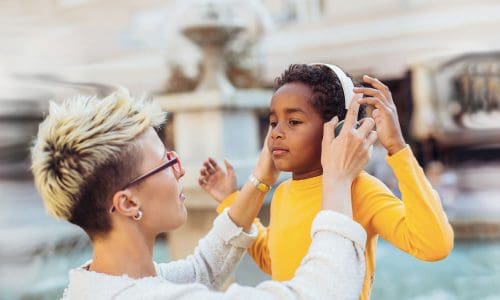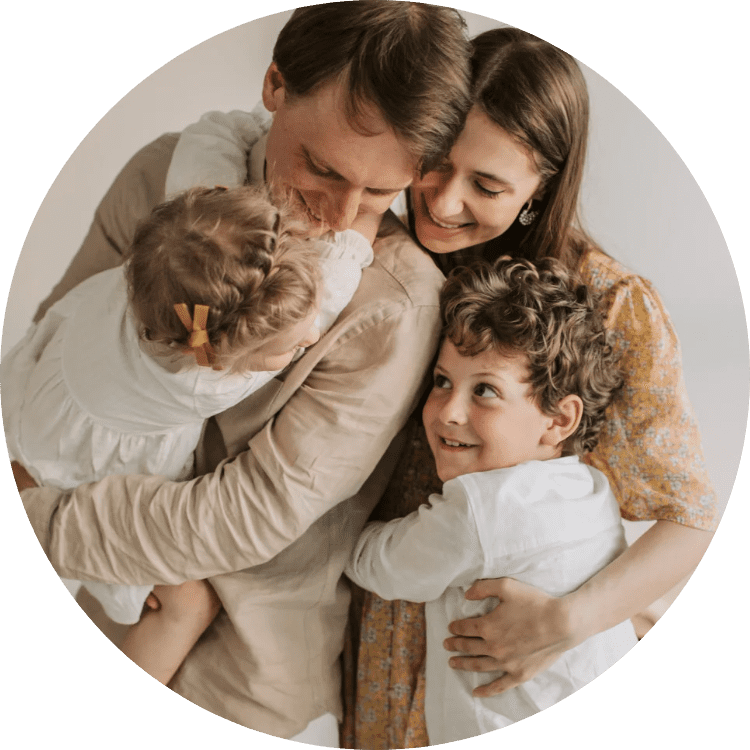Listening Therapy for Autism, Speech and Language Differences
Enhance autism treatment programs at home or in-clinic with non-invasive and drug-free sensory stimulation.
A person with autism spectrum disorder (ASD) can have difficulties interacting socially with others, communicating effectively, and managing emotional and behavioral responses.
These challenges can make it difficult for therapists to administer treatments that are effective in helping individuals with ASD, including behavioral therapy, ABA, play therapy, sensory therapies, occupational therapy, and others. In order to enhance the efficacy and maximize the benefits of these approaches, the individual must be receptive to treatment for the duration of the session, either in-clinic or at home.
Unyte-iLs offers programs rooted in Polyvagal Theory which help people with ASD self-regulate and feel calmer, opening them up to improved communication, social interaction, and even learning and performance of new activities. In this regulated state, the individual becomes more receptive to the effective therapies mentioned previously.
Applying Unyte-iLs Programs to an ASD Treatment Program
Unyte-iLs offers bottom-up, non-invasive and drug-free solutions for individuals with ASD that are practical and accessible. Our programs include music, movement, breathing, meditation and language exercises that soothe the nervous system to enable meaningful and lasting changes in physiological state. We partner with healthcare professionals, families and individuals to deliver these multisensory solutions in-clinic or remotely through our digital-delivery platform.
How Can We Help?
Book a call with one of our specialized consultants to learn more about how Unyte-iLs programs can help enhance ASD treatments in the clinic or at home.
Safe and Sound Protocol (SSP)
The Safe and Sound Protocol is designed to reduce stress and auditory sensitivity while enhancing social engagement and resilience. SSP is commonly used by mental health professionals as an adjunct therapy to help their patients regulate their nervous system, process external cues and signals more effectively, and attain a grounded state in which they feel safe and calm. Once patients are able to regulate, they can access higher cognition and learning more easily, build positive social relationships, and ultimately can be primed for responding to other therapies.


The Focus System
The Focus System is a clinical-level intervention designed for use in the clinic, in a school setting, or even at home. The program consists of therapeutically-treated music combined with movement activities and cognitive challenges to activate brain networks. Research has shown that 90% of children with Autism Spectrum Disorder or Sensory Processing Disorder saw great improvement in sensory processing and motor coordination by using the Focus System home program, in addition to increased emotional regulation.
How Unyte-iLs Programs Help Enhance ASD Treatments
See how our programs have helped mental health therapists and families enhance their treatment ASD programs in clinical settings and at home.
Programs For Families and Individuals
Unyte-iLs programs are administered by certified clinician and not intended for unsupervised use at home. If you are interested in applying our programs as part of a treatment for yourself or a family member, get in touch with us to discuss your options.
We can help onboard your existing therapist to one of our programs if you are already working with one; connect you to one of our certified therapists if you are not working with anyone; or in many cases we can work with you directly.
How Can We Help?
Book a call with one of our specialized consultants to learn more about how Unyte-iLs programs can help enhance ASD treatments in the clinic or at home.




 © 2025 Unyte Health US Inc.
© 2025 Unyte Health US Inc.